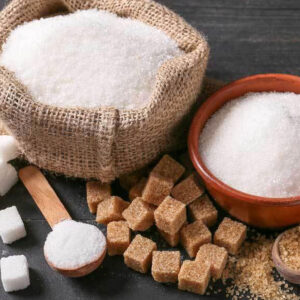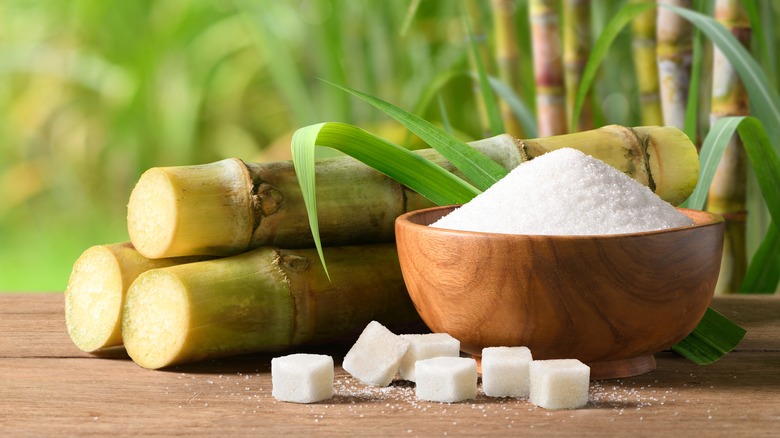Many recipes specify either beet sugar vs cane sugar, depending on the intended outcome.
Many recipes specify either beet sugar vs cane sugar, depending on the intended outcome.
Blog Article
Discover the Uses and Advantages of Beet Sugar Vs Cane Sugar in Your Daily Diet Regimen
Discovering the distinctive top qualities of beet and cane sugar discloses greater than just their sweetening abilities; it highlights their unique effect on wellness and cookeries. Beet sugar, understood for its refined taste, is frequently preferred in delicate treats, whereas cane sugar, with its tip of molasses, adds richness to durable recipes. Each kind holds its very own dietary account and glycemic ramifications, inviting a much deeper understanding of their functions in a balanced diet regimen and lasting intake techniques.
Origin and Manufacturing Procedures of Beet and Cane Sugar

The distinct environments and dirt types needed for growing sugar beetroots and sugarcane add to distinctions in their cultivation techniques and geographical circulation, affecting the economics and sustainability of their production. beet sugar vs cane sugar.
Nutritional Contrast Between Beet Sugar and Cane Sugar
In spite of originating from different plants, beet sugar and cane sugar are nutritionally really comparable, both largely containing sucrose. Each provides regarding 4 calories per gram, converting to roughly 16 calories per tsp. Structurally, both sugars are made up of about 99.95% sucrose, with very little amounts of various other materials like moisture and trace minerals, which do not considerably alter their dietary accounts.

Inevitably, when picking between beet sugar and cane sugar based on nutritional web content alone, both offer identical advantages and disadvantages as they are basically types of the very same molecule-- sucrose, offering quick energy without other nutrients.
Effect on Wellness: Glycemic Index and Caloric Content
Checking out even more into the effects of beet sugar and cane sugar on health and wellness, it is crucial to consider Learn More Here their glycemic index and caloric material. The glycemic index (GI) of both beet and cane sugar is around 65, categorizing them as high-GI foods, which can create quick spikes in blood glucose degrees.
Each sort of sugar includes about 4 calories per gram, making their calorie web content matching. For those checking caloric consumption, especially when handling weight or metabolic wellness problems, recognizing this equivalence is essential (beet sugar vs cane sugar). Excessive consumption of any kind of high-calorie, high-GI food can contribute to wellness concerns such as weight problems, heart disease, and insulin resistance.
Environmental and Economic Factors To Consider of Sugar Production
Beyond wellness influences, the production of beet and cane sugar also elevates considerable environmental and financial concerns. Sugar beet cultivation often tends to need cooler environments and has a lower geographical impact contrasted to sugar cane, which flourishes in exotic areas. Both plants are extensive in terms of water usage and land occupation, possibly leading to deforestation and water shortage. Financially, the worldwide sugar market is very unstable, affected by adjustments in international profession plans and aids. Lots of nations incentivize sugar manufacturing through financial support, skewing market rates and impacting small farmers adversely.
Furthermore, using pesticides and plant foods in both beet and cane sugar growing can bring about dirt destruction and pollution, more impacting biodiversity and local water bodies (beet sugar vs cane sugar). The choice between growing sugar beet or cane typically rests on local ecological conditions and financial variables, making the sustainability of sugar manufacturing a complicated issue
Culinary Applications and Flavor Differences
While the ecological and financial facets of sugar production are without a doubt considerable, the choice between beet and cane sugar additionally affects cooking applications and taste accounts. Beet sugar, obtained from the sugar beet plant, is recognized for its extremely neutral taste. This makes it a functional check my reference active ingredient in baking, where it does not alter the taste of basics various other components. It liquifies quickly and is suitable for usage in cakes, cookies, and breads.
Cane sugar, drawn out from sugarcane, commonly preserves molasses traces, which present a distinct splendor and depth. This slight molasses flavor boosts the intricacy of baked goods, sauces, and marinates. It is specifically favored in items where a caramel touch is preferred, such as in brownies or gingerbread. Moreover, the minor variation in dampness material in between beet and cane sugar can affect the appearance and consistency of meals, making cane sugar a preferred selection for certain recipes that take advantage of its special buildings.

Final Thought
Finally, both beet and cane sugar have unique beginnings and manufacturing processes, providing similar dietary profiles with mild distinctions in sodium material and taste. While their influence on health, specifically pertaining to glycemic index and calories, is comparable, the option in between them commonly comes down to ecological, economic elements, and certain cooking demands. Recognizing these elements can direct customers in making educated choices that straighten with their health goals and flavor choices.
Report this page